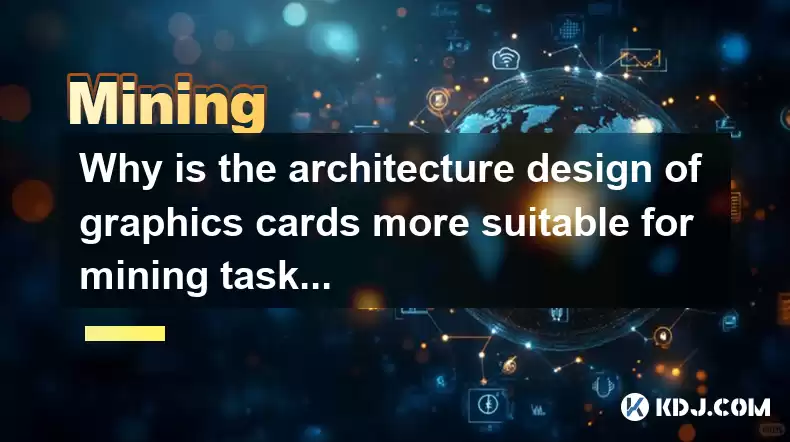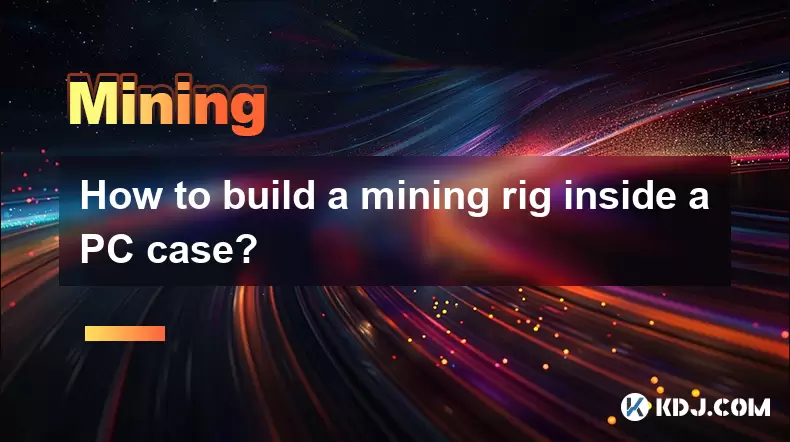-
 Bitcoin
Bitcoin $117500
2.15% -
 Ethereum
Ethereum $3911
6.19% -
 XRP
XRP $3.316
10.79% -
 Tether USDt
Tether USDt $1.000
0.01% -
 BNB
BNB $787.2
2.24% -
 Solana
Solana $175.2
4.15% -
 USDC
USDC $0.9999
0.00% -
 Dogecoin
Dogecoin $0.2225
8.40% -
 TRON
TRON $0.3383
0.28% -
 Cardano
Cardano $0.7868
6.02% -
 Stellar
Stellar $0.4382
9.34% -
 Hyperliquid
Hyperliquid $40.92
7.56% -
 Sui
Sui $3.764
7.63% -
 Chainlink
Chainlink $18.48
10.66% -
 Bitcoin Cash
Bitcoin Cash $582.1
1.88% -
 Hedera
Hedera $0.2601
6.30% -
 Avalanche
Avalanche $23.33
4.94% -
 Ethena USDe
Ethena USDe $1.001
0.02% -
 Litecoin
Litecoin $122.3
2.04% -
 UNUS SED LEO
UNUS SED LEO $8.969
-0.27% -
 Toncoin
Toncoin $3.339
0.86% -
 Shiba Inu
Shiba Inu $0.00001287
4.30% -
 Uniswap
Uniswap $10.43
7.38% -
 Polkadot
Polkadot $3.861
5.08% -
 Dai
Dai $1.000
0.02% -
 Bitget Token
Bitget Token $4.513
3.41% -
 Monero
Monero $267.7
-6.18% -
 Cronos
Cronos $0.1499
4.14% -
 Pepe
Pepe $0.00001110
5.15% -
 Aave
Aave $284.9
8.28%
Why is the architecture design of graphics cards more suitable for mining tasks?
GPUs' massively parallel architecture, high-bandwidth GDDR memory, and high throughput excel at the computationally intensive task of cryptocurrency mining, making them a versatile, accessible entry point, though ASICs ultimately offer superior efficiency.
Mar 11, 2025 at 05:01 am

Key Points:
- GPUs possess massively parallel processing capabilities ideal for the computationally intensive nature of cryptocurrency mining.
- The architecture of GPUs, with their numerous cores, allows for simultaneous processing of numerous cryptographic hashes.
- Specialized memory architectures in GPUs, like GDDR, offer high bandwidth crucial for rapid data transfer during mining.
- GPUs are designed for high throughput operations, aligning perfectly with the demands of mining algorithms.
- While ASICs ultimately outperform GPUs in mining efficiency, GPUs offer a more accessible and versatile entry point.
Why is the architecture design of graphics cards more suitable for mining tasks? The answer lies in the fundamental differences between the processing architectures of GPUs (Graphics Processing Units) and CPUs (Central Processing Units). Cryptocurrency mining, particularly with proof-of-work algorithms, relies heavily on performing trillions of cryptographic hash calculations per second. This requires massive parallel processing power, a strength GPUs excel at.
CPUs, designed for sequential processing of complex instructions, are inherently less efficient for this task. They handle instructions one after another, limiting their ability to rapidly solve the complex mathematical problems involved in mining. GPUs, on the other hand, feature thousands of smaller, more specialized processing cores. This massively parallel architecture allows them to tackle many hash calculations simultaneously, drastically increasing mining speed.
The memory architecture plays a crucial role. GPUs typically use high-bandwidth memory like GDDR (Graphics Double Data Rate) which is designed for rapid data transfer. This is vital because mining algorithms require constant access to and processing of large datasets. The high bandwidth of GDDR memory ensures that the processing cores are never starved of data, maximizing their efficiency. This contrasts with CPUs which often have comparatively slower memory access speeds.
Furthermore, GPUs are designed for high throughput operations. This means they are optimized to handle a large volume of data in a short amount of time. This aligns perfectly with the demands of mining algorithms, which require processing vast amounts of data to generate valid hashes. The inherent design prioritizes speed and efficiency in processing large datasets, making them exceptionally well-suited for the task.
While Application-Specific Integrated Circuits (ASICs) are now dominant in the cryptocurrency mining landscape due to their superior hash rate and energy efficiency, GPUs offer several advantages, particularly for newcomers. ASICs are typically expensive, specialized, and lack the versatility of GPUs. GPUs can be used for other tasks like gaming or video editing, making them a more attractive investment for those who might not want to solely focus on mining. Their relative accessibility and affordability make them a common entry point for many aspiring miners.
The architecture of a GPU is specifically tailored to handle the parallel processing requirements of complex graphical computations. This same capability translates perfectly to the parallel processing needs of mining algorithms. The numerous cores work concurrently, drastically speeding up the process of generating hashes. This inherent parallel processing power is the key differentiator between GPUs and CPUs in the context of cryptocurrency mining.
The memory bandwidth is another critical factor. The high-bandwidth memory used in GPUs ensures that data is readily available to the processing cores. This prevents bottlenecks that can occur with lower-bandwidth memory, leading to significant performance improvements. This rapid data transfer capability is essential for maintaining a high hash rate during mining operations.
The high throughput nature of GPUs is also a significant advantage. They're designed to handle massive amounts of data simultaneously, which aligns directly with the requirements of mining algorithms. The ability to process a high volume of data quickly is crucial for efficient and profitable mining. This throughput advantage is one of the reasons GPUs were favored over CPUs in the early days of GPU mining.
Let's not forget the programmable nature of GPUs. This allows miners to adjust and optimize their mining strategies. While ASICs are fixed-function devices, GPUs offer more flexibility. This flexibility becomes especially relevant when new mining algorithms emerge, allowing for adaptability and potential continued use beyond a single algorithm’s lifespan.
The development of new algorithms further highlights the versatility of GPUs. While ASICs are often designed for specific algorithms, GPUs can be adapted to handle different algorithms with software updates. This adaptability makes GPUs a more future-proof investment compared to specialized ASIC miners. This is a key consideration for long-term mining strategies.
However, it's crucial to acknowledge the limitations of GPUs. ASICs eventually surpassed GPUs in terms of mining efficiency and power consumption. ASICs are designed specifically for mining, resulting in significantly higher hash rates and lower energy consumption per hash. This makes ASICs the more efficient choice for large-scale mining operations.
Despite the rise of ASICs, GPUs still hold a place in the cryptocurrency mining ecosystem. They offer a more accessible and versatile option, particularly for individual miners or those exploring mining as a secondary activity. Their programmable nature and adaptability remain advantageous in a constantly evolving mining landscape.
Frequently Asked Questions:
Q: Are GPUs still relevant for cryptocurrency mining in the age of ASICs?
A: While ASICs are more efficient for large-scale operations, GPUs remain relevant for smaller-scale mining and offer more versatility and adaptability to different algorithms.
Q: What are the main differences between GPU and CPU architecture concerning mining?
A: GPUs excel at parallel processing, crucial for mining, while CPUs handle tasks sequentially. GPUs also boast high-bandwidth memory for faster data transfer.
Q: What type of GPU memory is best for mining?
A: GDDR memory (Graphics Double Data Rate) is commonly used in GPUs for mining due to its high bandwidth, allowing for rapid data transfer crucial for high hash rates.
Q: Can I use any GPU for cryptocurrency mining?
A: While many GPUs can be used, newer GPUs with higher processing power and memory bandwidth generally yield better mining performance. Specific algorithm compatibility should also be considered.
Disclaimer:info@kdj.com
The information provided is not trading advice. kdj.com does not assume any responsibility for any investments made based on the information provided in this article. Cryptocurrencies are highly volatile and it is highly recommended that you invest with caution after thorough research!
If you believe that the content used on this website infringes your copyright, please contact us immediately (info@kdj.com) and we will delete it promptly.
- Stablecoins, Hong Kong, and On-Chain Finance: Navigating the Regulatory Maze
- 2025-08-08 12:30:12
- Tron's Sell-Off Spurs Altcoin Shift: What's Next for TRX?
- 2025-08-08 08:30:12
- Euler, DeFi, and Coinbase: A New York Minute on the Latest Buzz
- 2025-08-08 12:30:12
- RUVI Presale: Is the Growth Potential Real?
- 2025-08-08 09:10:12
- Sleep Token's US Takeover: Thornhill Rides the 'Even In Arcadia' Wave
- 2025-08-08 08:30:12
- FTT Token's Wild Ride: Creditor Repayments vs. Market Drop - A New Yorker's Take
- 2025-08-08 07:10:12
Related knowledge

What is "proof-of-work" and how does it relate to mining?
Aug 07,2025 at 02:03pm
Understanding the Concept of Proof-of-WorkProof-of-work (PoW) is a consensus mechanism used in blockchain networks to validate transactions and secure...

What are the differences between mining on Windows vs. Linux?
Aug 06,2025 at 11:29pm
Overview of Cryptocurrency Mining PlatformsCryptocurrency mining involves using computational power to solve complex cryptographic puzzles and validat...

How to use an old computer for cryptocurrency mining?
Aug 07,2025 at 12:42pm
Understanding the Feasibility of Using an Old Computer for MiningUsing an old computer for cryptocurrency mining may seem outdated, but it is still te...

Can you mine cryptocurrency using solar power?
Aug 07,2025 at 12:00am
Understanding the Basics of Cryptocurrency MiningCryptocurrency mining involves validating transactions on a blockchain network by solving complex cry...

How to build a mining rig inside a PC case?
Aug 06,2025 at 11:01pm
Understanding the Basics of a Mining Rig in a PC CaseBuilding a mining rig inside a PC case involves transforming a standard computer chassis into a d...

What are the best cryptocurrencies to mine with an ASIC?
Aug 08,2025 at 01:22am
Understanding ASIC Mining and Its Role in CryptocurrencyASIC stands for Application-Specific Integrated Circuit, a specialized hardware designed to pe...

What is "proof-of-work" and how does it relate to mining?
Aug 07,2025 at 02:03pm
Understanding the Concept of Proof-of-WorkProof-of-work (PoW) is a consensus mechanism used in blockchain networks to validate transactions and secure...

What are the differences between mining on Windows vs. Linux?
Aug 06,2025 at 11:29pm
Overview of Cryptocurrency Mining PlatformsCryptocurrency mining involves using computational power to solve complex cryptographic puzzles and validat...

How to use an old computer for cryptocurrency mining?
Aug 07,2025 at 12:42pm
Understanding the Feasibility of Using an Old Computer for MiningUsing an old computer for cryptocurrency mining may seem outdated, but it is still te...

Can you mine cryptocurrency using solar power?
Aug 07,2025 at 12:00am
Understanding the Basics of Cryptocurrency MiningCryptocurrency mining involves validating transactions on a blockchain network by solving complex cry...

How to build a mining rig inside a PC case?
Aug 06,2025 at 11:01pm
Understanding the Basics of a Mining Rig in a PC CaseBuilding a mining rig inside a PC case involves transforming a standard computer chassis into a d...

What are the best cryptocurrencies to mine with an ASIC?
Aug 08,2025 at 01:22am
Understanding ASIC Mining and Its Role in CryptocurrencyASIC stands for Application-Specific Integrated Circuit, a specialized hardware designed to pe...
See all articles

























































































